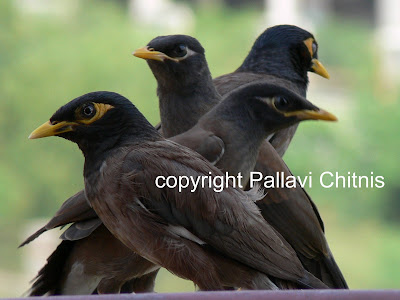Blobitecture or blob-ism is a term for an architectural movement in which buildings have organic, amoeba shaped bulging forms. These structures types are designed for theaters, museums, or tourist attractions. Come the monsoon season, and one can find the inspiration for these blob-ism structures, suspended from tall palms or thorny acacia trees. They are the pendulum shaped nests of the baya weaver; built using green resources like palm fronds, paddy leaves or grasses.
During my stay in Moira village of Goa, I saw many baya nests precariously suspended from coconut palm trees. The freshly woven green nests would gradually turn brown with age, swinging gently in the monsoon winds. The bright yellow birds made countless trips from nearby rice fields to coconut tree tops, while making their masterpiece. Following is what I found out about the architect bird, the baya weaver.
Baya weavers are found near grasslands, plantations or marshy areas in the Indian subcontinent and South East Asia. They are related to the common household sparrow; so much so that the juveniles and females of the species look like the house sparrows. Baya are social birds and breed in groups. Often 15-20 nests can be found together in a typical baya colony. Another Baya relative, the African sparrow weaver builds multi-storied apartment nests, in which 100 to 200 pairs have separate flask-shaped nesting chambers entered by tubes at the bottom.
 |
| Inspection time |
The nest is built by the male baya weaver between months of June- July. The structure is cylindrical, with a central nesting chamber and a long vertical tube that leads to the side entrance of the chamber. Such a nest design prevents intrusion by predators like snakes or raptors. A male bird is known to make up to 500 trips to complete a nest. The birds use their strong beaks to strip and collect the strands from leaves and grasses, and to weave and knot them, while building their nests.
Once a male and a female are paired, the two complete the nest by adding the entrance tunnel. Baya
females give “feminine” finishing touches to interiors by adding blobs
of mud, which provides stability to the nest in windy conditions.
 |
| Adding finishing touches to the Nest |















